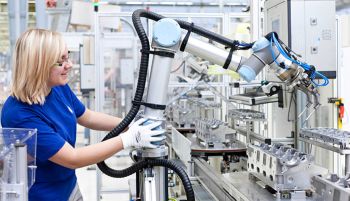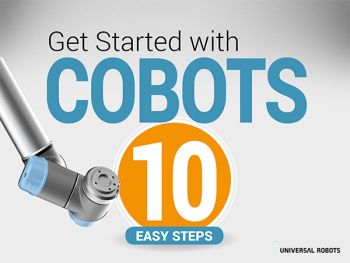Four robot gripper technology advances
- December 12, 2019
- Best Practices
- Automation
Robots are working in specialized fields and dangerous applications and many of them are able to work safely and effectively thanks to gripper technology advances.

With the growth of robotic applications in manufacturing, e-commerce order fulfillment, and other pick-and-place applications, there is a push for enhanced manipulation capabilities of robot grippers. This is the case especially with collaborative robots, which require robot grippers that can handle a widening variety of objects in fast, repetitive tasks.
The needs of the automotive, electronics, and food processing industries have propelled the development of claw, parallel, rotary, magnetic, and vacuum grippers. Besides consumer-packaged goods, various types of robotic grippers are used in the pharmaceutical, plastics, and agricultural industries. New specialized fields for robots include undersea exploration, telesurgery, and hazardous materials handling, all with their own gripper needs. Today’s robot gripper technology has advanced in four ways.
1. Robot grippers are customizable
Robot grippers must be properly sized for the size, weight, and hardness of the items they handle. The required precision of the application must also be considered. Designers must review the demands for cycle time, torque, and safety limitations of force applied.
Contact points, wear, and exposure to environmental contaminants also influence engineering and design. Many companies offer customizable end effectors, the part of the robot that interacts with its environment, for specific materials. Easy-to-use end effectors that can easily be removed and replaced have been developed.
2. Grippers have improved dexterity
By means of new materials and types of grippers, robots are more reliable and flexible than ever. Three-finger adaptive grippers minimize the tool changes required. The implementation of six-axis force and torque sensors have added further intelligence to the movements of grippers. Force sensing has improved the grippers’ capabilities to manipulate fragile items and are often used in applications where the gripper is working close to humans.

eBook: Get Started with Cobots: 10 Easy Steps
Cost-effective, safe, and flexible collaborative robots, or cobots, are making automation easier than ever, even for small and mid-sized companies. But while cobots can take on an amazing range of operations, some jobs make more sense to automate than others. That’s especially true if you’re just getting started — and that’s why we created this easy 10-step guide. Get Started with Cobots: 10 Easy Steps (PDF)
3. Grippers have added intelligent sensors
Machine learning, fed by datasets and connectivity, also shows great promise for grippers. Artificial intelligence, enabled with machine vision, instructs grippers how to approach objects. Robots are able to teach themselves through observation and comparison.
Robots are not only learning to compare objects to one another but can compare an object to the gripper itself and figure out the best method to move an object. Solutions have been developed so that an object’s properties and location can be determined from a single image, requiring fewer sensors and cameras mounted on the robot or in the environment.
4. Grippers combine multiple technologies
Some grippers are incorporating other technologies to create even better solutions. Combining vacuum grippers with fingers, computer vision, and machine learning can result in more reliable interactions. Some robots have been outfitted with two separate arms and different gripper configurations, allowing artificial intelligence (AI) to choose which arm to use for a certain task, increasing both speed and reliability.
This article originally appeared on the Robotics Online Blog. Robotic Industries Association (RIA) is a part of the Association for Advancing Automation (A3), a CFE Media content partner.